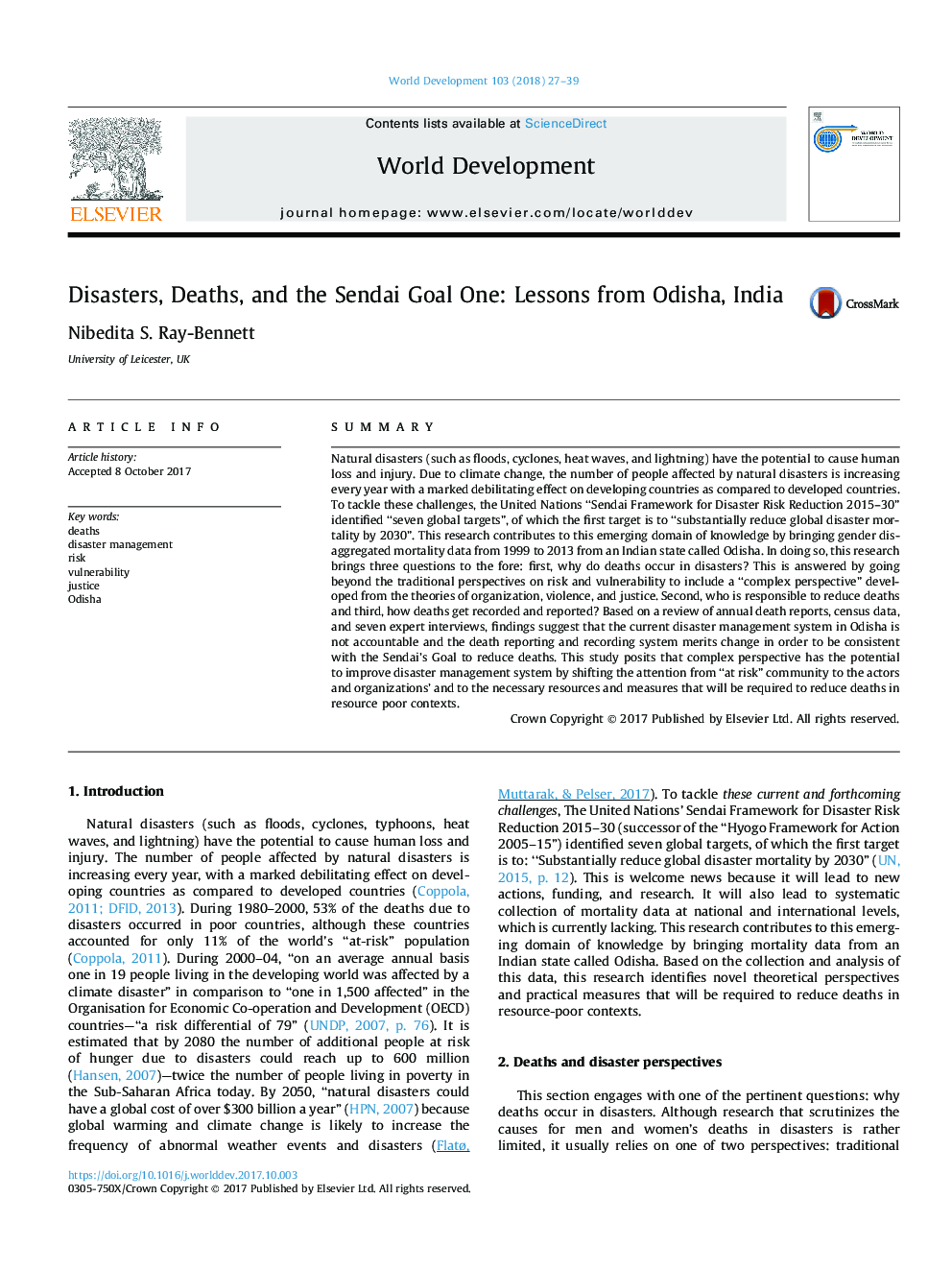| Article ID | Journal | Published Year | Pages | File Type |
|---|---|---|---|---|
| 7392170 | World Development | 2018 | 13 Pages |
Abstract
Natural disasters (such as floods, cyclones, heat waves, and lightning) have the potential to cause human loss and injury. Due to climate change, the number of people affected by natural disasters is increasing every year with a marked debilitating effect on developing countries as compared to developed countries. To tackle these challenges, the United Nations “Sendai Framework for Disaster Risk Reduction 2015-30” identified “seven global targets”, of which the first target is to “substantially reduce global disaster mortality by 2030”. This research contributes to this emerging domain of knowledge by bringing gender disaggregated mortality data from 1999 to 2013 from an Indian state called Odisha. In doing so, this research brings three questions to the fore: first, why do deaths occur in disasters? This is answered by going beyond the traditional perspectives on risk and vulnerability to include a “complex perspective” developed from the theories of organization, violence, and justice. Second, who is responsible to reduce deaths and third, how deaths get recorded and reported? Based on a review of annual death reports, census data, and seven expert interviews, findings suggest that the current disaster management system in Odisha is not accountable and the death reporting and recording system merits change in order to be consistent with the Sendai's Goal to reduce deaths. This study posits that complex perspective has the potential to improve disaster management system by shifting the attention from “at risk” community to the actors and organizations' and to the necessary resources and measures that will be required to reduce deaths in resource poor contexts.
Related Topics
Social Sciences and Humanities
Economics, Econometrics and Finance
Economics and Econometrics
Authors
Nibedita S. Ray-Bennett,
